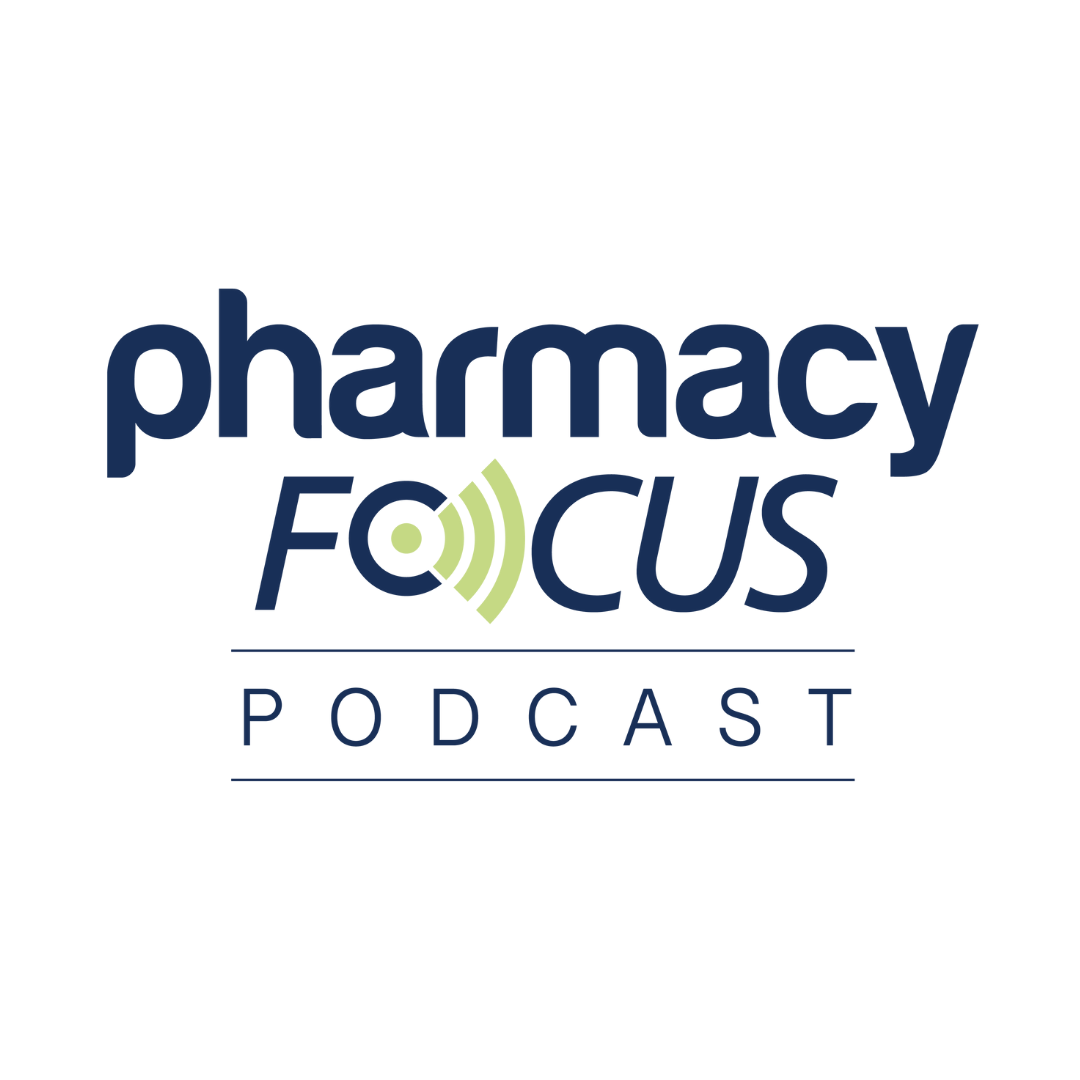Commentary
Article
Managing Sustainable Drug Spend: 5 Trends Reshaping Pharmacy Benefits in 2025
Author(s):
The US health care market faces transformative changes in 2025, as biosimilars, GLP-1s, and new pharmacy economics reshape how benefit managers balance innovation with affordability.
Health care within the US is entering a transformative period. Medical spending is projected to reach $485 billion in 2025, according to IQVIA.1 Health spend is projected to increase an average of 4% to 7% a year, with a 13.3% increase in specialty drug trend according to the annual Segal survey.2 This growth comes while traditional boundaries between wholesalers, manufacturers, pharmacy benefit managers (PBMs), payers, and providers are increasingly blurred. We are seeing complicated ownership and business relationships that comingle buying organizations, manufacturers, PBMs and health plans. This creates both challenges and opportunities for benefit administrators and payers.
Within this landscape, trends around biosimilars, glucagon-like peptide-1 (GLP-1) drugs, and other medications will influence cost changes in the marketplace. Unique breakthrough therapies and new combination formulations will give patients novel treatment options, often at a higher cost. And, as a new administration enters in 2025, the potential for policy recommendations will signal changes to the industry.
With all of this in the air, a few trends stand out to have the biggest impact on benefit administrators and payers in the coming year.
Several trends will reshape pharmacy benefits in 2025 | Image credit: © Nyetock | stock.adobe.com

Trend No.1: The Next Wave of Biosimilars
The biosimilar landscape is poised for significant expansion in 2025. The introduction of ustekinumab (Stelara) biosimilars will create a new phase in the market's evolution. A report by the Biosimilars Council found use of these lower-cost products saved Americans $12.4 billion in 2023.3 Multiple ustekinumab products are expected to launch within a 6-month window, which may lead to quicker adoption and savings compared to adalimumab (Humira) biosimilars.4 Each biosimilar launch will be unique in different ways.
Market data suggest adalimumab biosimilars distributed through pharmacies achieved 35% market penetration after 2 years.5 Data from the Navitus Drug Trend report show early adopters of these products achieved cost savings of 20% in 2023 while maintaining high patient satisfaction rates through comprehensive transition programs.6
Savings opportunities and familiarity with switching may drive a willingness to prescribe and provide coverage, but it is noted that ustekinumab biosimilars may encounter unique market dynamics that were not seen in adalimumab. In a very competitive market, all bets are off. As manufacturers are increasingly willing to pair off with payers and pharmacies in private label relationships to secure market share, we could see a first-mover biosimilar that is not readily available to all patients or plan sponsors. We may also see some manufacturers opt out of the ustekinumab market if they don’t believe they can get enough market share to cover the cost of bringing the biosimilar to market.
If partnerships are pursued, these will create an opportunity to capture savings for plan sponsors and drive a lowest net-cost approach. This is compared to capturing revenues through PBM-owned manufacturer private-label or traditional rebate relationships that may lack transparency.
Trend No.2: The GLP-1 Management Challenge
In 2023, diabetic GLP-1 medications were the biggest contributor to client trend as reported in the Navitus Drug Trend Report.6 The class added 1.7% to overall drug spending, even though less than 3% of members used the medications.6
We will see utilization of GLP-1 receptor agonists including semaglutide (Wegovy, Ozempic; Novo Nordisk) and tirzepatide (Mounjaro, Zepbound; Lilly) continue to expand beyond initial clinical indications for diabetes and obesity. Morgan Stanley Research projects this market will reach $13 billion by 2025 and grow to $100 billion in the next 5 years.7 Clinical studies are investigating benefits in sleep apnea, heart failure, addiction and polycystic ovary syndrome, potentially broadening the patient population significantly. With expanded indications, 9% of the U.S. population could be prescribed these drugs for obesity alone by 2035.7
The market is seeing unique approaches to support increased utilization from direct-to-consumer pharmacies and compounding pharmacies. It is important to note that safety concerns and legal challenges may cause issues with accessing compounded products. The FDA recently reiterated their concerns over the practice of compounding FDA-approved medications.8
In 2025, health plans will need to focus on balancing access and affordability. In-bound patient demand is not likely to decrease, especially if these drugs are shown to help with a wider range of weight-related conditions. Balance this with the recent studies showing that almost half of GLP-1 utilizers discontinue the medication after 12 months9 and the attained benefits go away, wasting health care dollars. Managing these costs will require a combination of plan data assessment, utilization management, cost containment and other healthy weight management strategies.
Trend No.3: Optimizing Medical Specialty Drug Management
Plan sponsors are increasingly focused on improving management of specialty medications that are administered under the medical benefit. In 2023, Pharmaceuticals Strategies Group analysis showed that 63.8% of specialty spend was through the pharmacy benefit, increasing from 2021-2022, and spend in the medical benefit category decreased to 36.2%.10 Complex billing processes and site-of-care variations can create significant cost-control challenges when drugs are administered as a medical benefit. Meaningful savings are available through comprehensive management approaches, proactive utilization management, and detailed review of claims submissions and accuracy.
We will see PBMs expand capabilities to analyze medical claims data and identify opportunities to apply best practice management practices. For example, shifting towards home infusion and office-based administration when appropriate, increasing use of biosimilars, and evaluating how the 340B drug pricing program may change or adapt in 2025 will be trends to watch.
Trend No.4: Changes in Pharmacy Economics
Pharmacy economics are experiencing a fundamental shift away from historical practices and margin opportunities. Traditionally, pharmacies relied on a cross-subsidization model in which lower margins on brand-name drugs offset higher margins on generics. This model worked well to incentivize pharmacies to dispense generics over branded products. However, this balance is being disrupted by the increasing prevalence of expensive, high-demand, branded medications, particularly GLP-1s, and a decrease in blockbusters turning generic.
The mix of products being dispensed is driving down overall margins for pharmacies without regard for the services being provided. This is also creating an operating cash issue at pharmacies, which is compounded by changes in direct and indirect remuneration. This reduces a form of cash float that pharmacies may have had. At the same time, pharmacies may face new operating capital pressures in 2026 with components of the Inflation Reduction Act (IRA) including price negotiations, rebate payments, and the timing of those payments.11
This evolution has sparked cost-plus pharmacy contracting models. These seek to reduce cross-subsidization, re-balance the pricing dynamics, and enable pharmacy stability and service. These changes are driving pharmacies and some benefit managers to develop more sustainable economic models that balance fair pharmacy compensation with patient affordability. Additionally, legislative efforts to stabilize pricing for pharmacies will have an impact on the pharmacy pricing dynamics which could be felt by benefit administrators.
Trend No.5: Policy Evolution and Market Response
With a new administration, the pharmaceutical market is monitoring policy shifts in 2025. Federal and state-level changes have the potential to reshape the current landscape. The previous Trump administration communicated several actions to affect drug pricing, including executive orders on drug importation from Canada and rebate reform initiatives for Medicare Part D. Although these initiatives were not implemented due to regulatory restrictions or changes under the Biden administration, the National Academy for State Health Policy reports that all 50 states have passed some form of PBM oversight legislation in the past several years.12 Furthermore, 16 states have or may soon prevent spread pricing and 11 have enacted laws requiring PBMs to share rebate information to health plans.12
New policy proposals in 2025 could include modifications to drug pricing provisions of the IRA, changes to Medicare drug price negotiation programs, and new approaches to drug sourcing. We expect to see continued focus on drug price transparency, more state-created drug affordability boards, and regulation of PBM practices.
In the absence of legislation, plan sponsors and health plans, with the assistance of consultant advisors, are seeking more clarity to pricing information contractually and through their renewal process. Regardless of national policy changes, the reality is that PBM contracts and drug manufacturer pricing is incredibly complex. Any efforts to improve transparency in pricing will support lawmakers’ efforts to bring clarity and fairness to the market.
Looking Ahead: Strategic Implications
As we look toward 2025 and beyond, substantial transformation is predicted for the prescription drug landscape. The convergence of market pressures, scientific innovation, and policy reform will create opportunities and challenges for healthcare stakeholders:
- Market Evolution: The rise of biosimilars will create opportunities for cost savings. New partnerships and direct-to-consumer online offerings may shape competitive dynamics
- Cost Models and Management: Pharmacies and payers will remain focused on managing business economics amid increasing cost trends and reduced margins
- Policy Environment: Regulatory changes at both federal and state levels will drive go-forward reform demanding greater transparency and new approaches to drug pricing. Plan sponsors and health plans may seek this in advance through contracting practices.
Those that can successfully partner and balance these forces will be best positioned to deliver value in 2025 and beyond.
REFERENCE
The Use of Medicines in the US 2024: Usage and Spending Trends and Outlook to 2028. IQVIA. May 7, 2024. Accessed January 22, 2025. https://www.iqvia.com/insights/the-iqvia-institute/reports-and-publications/reports/the-use-of-medicines-in-the-us-2024
What Are the Projected 2025 Health Plan Cost Trends? Segal. September 18, 2024. Accessed January 22, 2025. https://www.segalco.com/consulting-insights/2025-health-plan-cost-trend-survey
Biosimilar Medicines Saved $12.4 Billion in 2023. Biosimilars Council. September 5, 2024. Accessed January 22, 2025. https://biosimilarscouncil.org/news/biosimilar-medicines-saved-12-4-billion/
Jeremias S. A Banner Year for Biosimilars: The 19 FDA Approvals From 2024. Center for Biosimilars. January 21, 2025. Accessed January 22, 2025. https://www.centerforbiosimilars.com/view/a-banner-year-for-biosimilars-the-18-fda-approvals-from-2024
Myshko D. 2024 Formulary Moves. Managed Healthcare Executive. January 5, 2024. Accessed January 22, 2025. https://www.managedhealthcareexecutive.com/view/2024-formulary-moves
Examining Trends that Drive Decisions: 2023 Drug Trend Report. Navitus. Accessed January 22, 2025. https://info.navitus.com/dtr-2023-snapshot
Scaling Up the Impact of Obesity Drugs. Morgan Stanley. May 7, 2024. Accessed January 22, 2025. https://www.morganstanley.com/ideas/obesity-drugs-market-expanded-opportunity
FDA’s Concern with Unapproved GLP-1 Drugs Used for Weight Loss. FDA. Updated December 18, 2024. Accessed January 22, 2025. https://www.fda.gov/drugs/postmarket-drug-safety-information-patients-and-providers/fdas-concerns-unapproved-glp-1-drugs-used-weight-loss
Real-World Trends in GLP-1 Treatment Persistence and Prescribing for Weight Management. Blue Health Intelligence. May 2024. Accessed January 22, 2025. https://www.bcbs.com/media/pdf/BHI_Issue_Brief_GLP1_Trends.pdf
2023 State of Specialty Spend & Trend Report. PSG. Accessed January 22, 2025. https://www.psgconsults.com/industry-report/2023spend-and-trend/
Cubanski J, Neuman T, Freed M. Explaining the Prescription Drug Provisions in the Inflation Reduction Act. KFF. January 24, 2023. Accessed January 22, 2025. https://www.kff.org/medicare/issue-brief/explaining-the-prescription-drug-provisions-in-the-inflation-reduction-act/
State Pharmacy Benefit Manager Legislation. National Academy for State Health Policy. July 10, 2023. Accessed January 22, 2025. https://nashp.org/state-tracker/state-pharmacy-benefit-manager-legislation/
Newsletter
Stay informed on drug updates, treatment guidelines, and pharmacy practice trends—subscribe to Pharmacy Times for weekly clinical insights.





